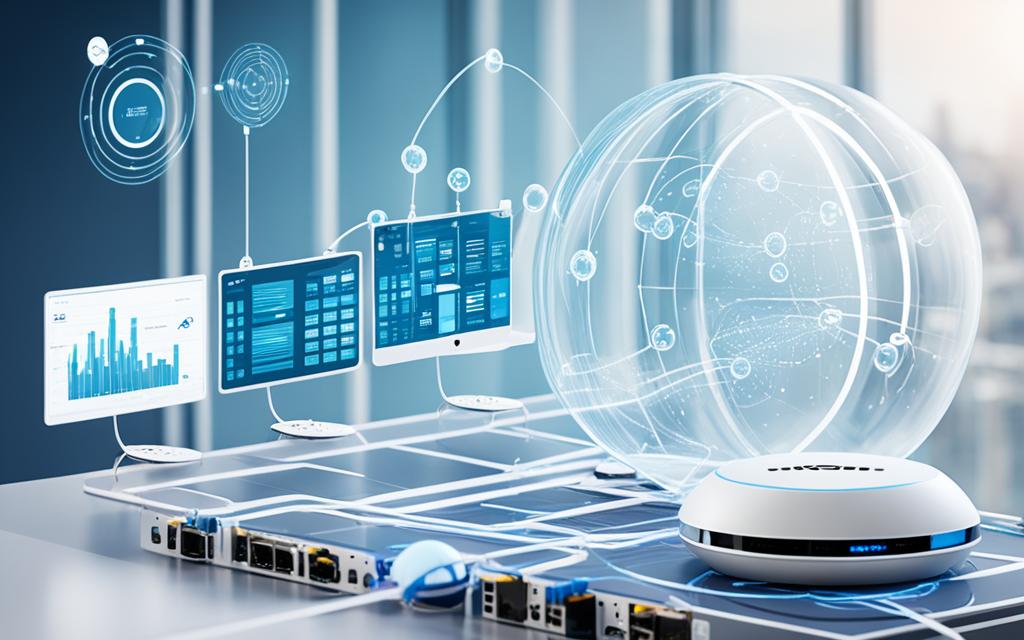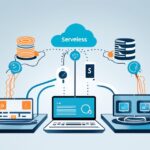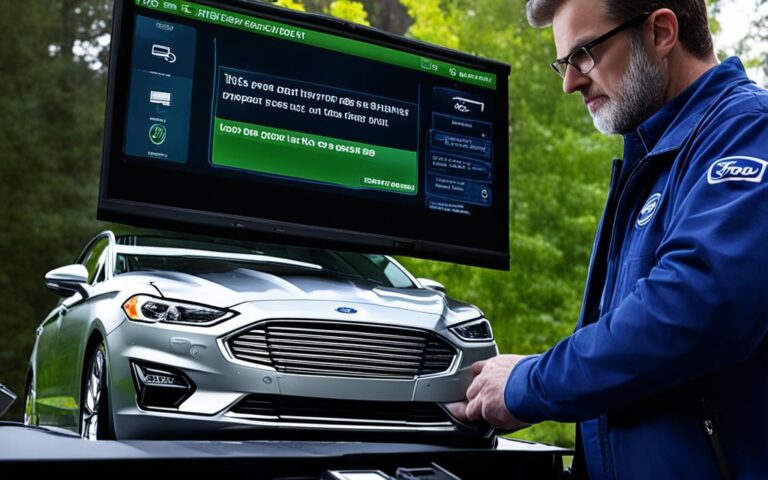Edge computing has changed how businesses handle and analyze data, making things more efficient and connected. At first, it might seem expensive, but looking at the total cost shows cost savings and better performance. By moving tasks closer to where data is, it cuts down on delays, boosts connectivity, and makes things run smoother. We’ll look into how edge computing’s costs work, including examples of saving money, and talk about how it’s getting more affordable and what the future holds.
Key Takeaways
- The miniaturization of hardware has significantly reduced the cost of deploying edge computing devices, enabling them to be deployed in resource-constrained environments1.
- Advancements in networking, such as the availability of high-speed and low-latency networks like 5G, allow for real-time data processing, enhancing the responsiveness of edge computing devices1.
- Cloud computing has played a crucial role in scaling the processing power and storage capacity required for edge computing applications, reducing costs associated with infrastructure1.
- The availability of open source software has lowered development and deployment costs for edge computing applications, leveraging the collective knowledge of the community1.
- Standardization in edge computing has reduced the complexity of deploying and managing edge computing infrastructure while facilitating integration with existing IT systems1.
Understanding Edge Computing
Edge computing is a new tech that moves data processing closer to where it’s created. This includes IoT devices, sensors, or local servers. It cuts down on the need to send data to big data centers, making things faster and more efficient2.
This shift helps companies get real-time insights and make quicker decisions. It’s key for handling the huge amount of data we have today. Instead of just using big data centers, edge computing spreads out data processing and analytics2.
Edge computing is great for reducing delays, making things faster and improving user experiences. By handling data closer to where it’s made, edge devices can analyze it quickly. This leads to quicker decisions and smoother interactions2.
It also means faster data processing, better reliability, and lower costs. With data spread out, there’s less chance of one thing causing everything to fail. Companies can save money on storage and internet use over time2.
Edge computing helps many industries and use cases. For example, in manufacturing, edge AI helps improve quality and efficiency. Retailers use it to automate tasks and give customers better experiences3.
But, edge computing can be costly. Prices vary by scale, data amount, location, and the skills needed for setup and upkeep3.
Some companies might need to create a data science team, which costs a lot. Or, they can buy AI apps or hire experts to manage them, which is cheaper3.
Even with upfront costs, edge computing can save millions. It makes things more efficient, cuts costs, and improves customer satisfaction. Used wisely, it can bring a big return on investment3.
Edge computing also means better security and privacy. Data stays local, so it doesn’t go to big data centers or the cloud. This keeps data safer2.
| Benefits of Edge Computing |
|---|
| Faster processing times and reduced latency |
| Improved reliability and lower costs |
| Enhanced user experiences |
| Improved security and privacy |
A Gartner forecast says by 2025, most enterprise data will be made outside big data centers. This shows how important edge computing is for digital growth and making data-driven choices4.
In summary, edge computing lets companies process data closer to where it’s made. This leads to faster, more efficient, and better experiences. As we need real-time data more, edge computing is a key solution for businesses2.
Cost Analysis: Edge Computing vs. Traditional Methods
Looking at the costs of edge computing versus traditional methods like CDNs and cloud services, we see edge computing has a lower Total Cost of Ownership (TCO)5. It offers many chances for saving money and improving efficiency.
Edge computing is cheaper because it processes data near the source, cutting down on data transport costs5. This means less need for expensive networks to move data around.
Also, edge computing stores data locally, which is cheaper than keeping it in big data centers5. Traditional methods can be costly to store and maintain large data sets. Edge computing, on the other hand, stores data closer to where it’s needed, reducing costs.
At first, edge computing might seem more expensive because it has more infrastructure. But new tech has made it cheaper to maintain5. Plus, edge computing’s security features can save money by reducing the risk of cyber-attacks5.
Traditional cloud computing also has its cost benefits. Cloud services offer flexible pricing for businesses of all sizes5. They can save money over time by making operations more efficient and storing lots of data5. Cloud is great for digital businesses that need remote access and can grow quickly.
Considering the pros and cons of edge and cloud computing, a mix of both might be best5. Hybrid cloud combines the best of both, offering scalability, flexibility, security, and efficient data processing5.
| Edge Computing | Traditional Cloud Computing |
|---|---|
| Reduces data transport costs | Cost-effective and flexible |
| Localized data storage | Excellent for storing large data sets |
| Advanced security features | Remote accessibility and scalability |
| Flexible pricing for businesses |
The choice between edge and cloud computing depends on many factors, like customer needs, budget, and how the business works5. Companies should look at their own needs and see which system offers the most benefits. This way, they can make a choice that fits their goals and budget.
Strategic Use of Edge Computing
Edge computing is key for businesses to boost efficiency and performance. It processes data close to where it’s created, cutting down on delays and making things faster for users6. By using edge computing smartly, companies can make the most of their data and needs, leading to big wins.
Edge computing is great for handling data that needs quick action. Things like IoT devices, real-time analytics, and fast-paced apps benefit a lot from it. By doing tasks closer to where data is made, companies cut down on the need to send data far away. This makes things faster and better6.
Edge computing also saves money. Its design lets it grow easily without costing a lot6. Plus, it gets cheaper as it gets bigger6. Using shared resources and virtualization helps save money by using less hardware6.
Keeping data safe is crucial with edge computing. It uses special security steps and encryption to keep data safe6. It also quickly spots and fixes security problems, which helps avoid big losses6.
To get the best from edge computing, companies must think about storage, upkeep, and security. Getting these right helps make sure edge computing works well and gives great results.
Strategic Considerations for Edge Computing
| Considerations | Edge Computing Advantages |
|---|---|
| Real-time or latency-sensitive data processing | Reduced latency, improved user experience |
| Modular design and scalability | Easy expansion without high costs |
| Economies of scale | Cost efficiencies in larger deployments |
| Resource sharing and virtualization | Optimized hardware utilization, cost efficiency |
| Security protocols and encryption | Enhanced data protection, reduced risks |
Using edge computing smartly helps businesses save money and do better. By looking at what they need and where edge computing can help, companies can find big benefits. Edge computing’s perks, like faster speeds, saving money, and better security, make it a smart choice for businesses.
Learn more about using edge computing wisely in this in-depth study.
Read more about how edge computing can make things more sustainable in this useful article.
Check out this blog post for key facts about edge computing.
Edge Computing and the Growing Data Deluge
The rapid growth of data has made managing it a big challenge. The IDC report says we created 59 zettabytes of digital data in 2020. By 2025, this will jump to 175 zettabytes, showing a big increase in data7.
Before, we sent lots of data to central servers for analysis. This caused delays and used a lot of bandwidth. Edge computing changes this by processing data near where it’s created. This cuts down on delays and makes networks work better7.
Setting up edge computing costs money at first. But looking at the long-term costs, it can be cheaper. It helps businesses with lots of data by cutting down on bandwidth costs. Data is processed closer to where it’s needed7.
Edge computing also helps with storage costs. By storing data at the edge, businesses don’t need expensive central storage. This leads to big savings7.
Edge computing might cost more to maintain because it’s spread out. But new systems that fix problems automatically can lower these costs. This makes maintenance cheaper7.
Security and following rules are key in edge computing. But new tech is making edge computing safer. This means security and compliance costs will go down over time7.
As data keeps growing, edge computing is key to handling it. It makes analyzing data faster and more efficient. This helps networks work better and saves money7.
| Data Growth | Edge Computing Benefits |
|---|---|
| Exponential increase in data volume globally | Reduces latency and improves network efficiency |
| Projected data volume of 175 zettabytes by 2025 | Cost-effective solution in the long run |
| Increased bandwidth costs for businesses | Saves bandwidth costs by processing data closer to the source |
| Expensive centralized storage solutions | Significantly reduces data storage costs |
| Higher maintenance costs due to distributed nature | Mitigated through modern, self-healing, and automated maintenance systems |
| Security challenges in edge computing systems | Advancements in edge security technologies reduce security and compliance costs |
Noteworthy Developments in Edge Computing
Edge computing is growing fast, with more spending and more devices being used. This change is making businesses use technology in new ways and solve old infrastructure problems8.
By 2023, the world will spend over $208 billion on edge computing. This is because companies are investing more in hardware, software, and services. This shows how valuable edge computing is becoming9.
There are more edge computing devices and types now. Things like special devices, second-tier data centers, and content delivery networks are making edge technology more widespread9.
Edge computing has many benefits but also has challenges. Things like power, cooling, security, and maintenance need to be sorted out. This ensures it works well and uses its full potential9.
Despite the challenges, edge computing is growing and changing industries. It’s making a big impact in areas like IoT, self-driving cars, and smart apps. These areas need quick decisions and fast data98.
Noteworthy Developments in Edge Computing
| Statistical Data | Key Insights |
|---|---|
| Edge computing spending | Projected to exceed $208 billion in 2023 |
| Global edge computing market value by 2022 | Expected to reach $7,027.6 million8 |
| Experts’ view on edge computing | Considered a disruptor of cloud technology8 |
| Advantages of edge computing | Offers speed, security compliance, and adaptability8 |
| Market growth projection | Estimated to grow at a CAGR of 21.6% from 2022 to 2028, reaching $132.11 million10 |
| Number of IoT devices forecast | Expected to increase to 29.4 billion in 203010 |
As edge computing grows, businesses and industries can use it to stay ahead. It helps make quicker decisions and meet digital demands. The future looks bright for edge computing, with lots of innovation and change ahead9810.
The Power of Edge Computing
Edge computing is changing the tech world. It gives businesses more computing power and AI at the edge. With more devices connected and a need for quick data analysis, edge computing is a big deal.
Gartner says by 2025, 75% of data will be made outside big data centers11. This means a big move to edge computing, where data is processed near where it’s made. This is faster and more efficient than old methods that rely on big data centers12.
AI at the edge is also pushing edge computing forward. Moving AI processing to the edge cuts down on data transfer costs and delays12. This means businesses can make quick decisions and get fast insights, which is key for some apps.
Edge computing reshapes IT and business computing by moving storage and compute resources out of central data centers and closer to the data source11.
Edge computing gets a boost from 5G networks. 5G’s fast speeds and high bandwidth mean businesses can react quickly and use their networks better12. This is great for apps that need fast processing and analysis.
Edge computing also saves businesses money. It cuts down on cloud costs and makes IoT projects more efficient, leading to big savings12. For example, Sangfor HCI’s virtualization can save up to 70% of energy used by old servers13.
Edge computing enhances operational efficiency by enabling swift analysis and action through real-time insights and quicker decision-making12.
Edge computing is also good for the planet. Data centers use 1% of global electricity, and edge computing uses less energy and produces less waste13. By using cloud strategies and green practices, businesses can lower their carbon footprint.
Edge computing is changing how we handle and process data. It’s reliable, uses resources well, and keeps data safe. Businesses use edge computing to get advanced computing power and AI at the edge. This leads to quick analytics, saving money, and sustainable operations.
Benefits of Edge Computing
Edge computing brings big advantages for businesses. It makes lightning-fast decision making possible, especially for urgent tasks like self-driving cars and remote doctor visits.
It cuts down on data transfer, which means better bandwidth optimization and saving money14. Plus, it boosts security enhancements by keeping important data close to home and reducing cyber risks.
Edge computing is also super reliable and keeps things running smoothly, even if the internet goes down15. This is key for keeping things efficient and productive.
These perks help IoT and new tech grow and work better. Companies using edge computing use their resources smarter and work more efficiently, leading to success15. They can easily manage tasks like data analysis, processing, and storage15.
Conclusion
Edge computing has seen big changes in making things cheaper and easier to use. This has changed the tech world a lot. Experts say that as data grows, costs for connectivity will go up16. But, new tech has made edge computing cheaper and easier to get16. More companies competing has led to lower prices and better solutions16. Also, new security tech like TLS and SSL has made edge computing much safer16.
The Internet of Things (IoT) has made edge computing cheaper and easier to use16. In healthcare, edge computing is very useful. For example, sensors send only vital signs data, keeping it safe from hackers and protecting privacy16.
Cloud computing has made setting up and managing edge computing easier, cutting costs16. Standardizing protocols has helped devices from different makers talk to each other better, making edge computing easier to use16.
The future looks bright for edge computing. By 2024, we’ll create 149 zettabytes of data every day17. The IoT market will be over $5.4 trillion by 203517. Edge computing will also grow, reaching $450 billion in value17. It offers big benefits like saving money, doing things faster, and making things easier to use. This will change many industries, like industrial automation, retail, healthcare, and warehousing, where big companies already see big cost savings18.
In conclusion, using edge computing is crucial for saving money, doing things better, and preparing for the future. With its ongoing growth and more people using it, the future of edge computing is bright. It offers many chances for businesses to improve and innovate.
FAQ
What is edge computing?
Edge computing means processing data near where it’s created, like on IoT devices or local servers. This cuts down on data moving to big data centers. It makes networks work better.
How does edge computing save costs?
It saves money by handling data closer to where it’s made. This means less data has to travel long distances. Also, storing data locally at the edge is cheaper than keeping it in big data centers.
What are the benefits of strategic deployment of edge computing?
Putting edge computing in the right places cuts down on delays, makes users happier, and sends less data to big centers. It’s more cost-effective and boosts performance.
How does edge computing manage the growing data deluge?
Edge computing is key in handling more data by processing it near the source. An IDC report says edge computing will handle 20% of the data at the edge. This helps control the huge amount of data.
What are the noteworthy developments in edge computing?
Edge computing is set to be worth over 8 billion in 2023. There are more edge devices and types, like special devices and second-tier data centers, pushing growth.
What are the benefits of edge computing’s computing power and AI capabilities?
Edge devices are getting more powerful, thanks to tech advances. This means quicker and smarter data analysis and decisions. AI at the edge cuts down on delays and the costs of moving data.
What are the benefits of edge computing?
Edge computing makes decisions super fast, cuts down on data moving, boosts security, and keeps operations running smoothly. It helps IoT and new tech grow, leading to more innovation and better work processes.
How does edge computing contribute to cost reduction and improved performance?
At first, it might seem expensive, but edge computing saves money and works better over time. It makes data processing smarter, boosts work efficiency, and makes users happier.
What is the future of edge computing?
The future looks bright for edge computing with more data and tech advances. It’s getting cheaper and opens up chances for businesses to use its benefits.
Source Links
- https://www.matrixitservice.com/blog/which-factors-have-made-edge-computing-cheaper-and-easier/ – Which Factors have made Edge Computing Cheaper and Easier – Matrix Infosys – Hardware Repairing Idea
- https://entechonline.com/beyond-the-cloud-how-understanding-edge-computing-can-revolutionize-your-tech-strategy/ – Beyond the Cloud: How Understanding Edge Computing Can Revolutionize Your
- https://developer.nvidia.com/blog/building-an-edge-strategy-cost-factors/ – Building an Edge Strategy: Cost Factors | NVIDIA Technical Blog
- https://www.techtarget.com/searchdatacenter/definition/edge-computing – What Is Edge Computing? Everything You Need to Know
- https://www.institutedata.com/us/blog/edge-computing-vs-cloud-computing-the-ultimate-guide/ – Edge Computing vs Cloud Computing: The Ultimate Guide | Institute of Data
- https://www.progressiverobot.com/2024/03/24/edge-computing-factors/ – Which Factors have Made Edge Computing Cheaper and Easier – Progressive Robot
- https://pharaohsoft.com/how-edge-computing-can-boost-efficiency-and-reduce-expenses/ – Cutting Costs with the Edge: How Edge Computing Can Boost Efficiency and Reduce Expenses
- https://sirinsoftware.com/blog/edge-computing-a-buzzword-or-the-real-future – Edge Computing: A Buzzword Or The Real Future? – Sirin Software
- https://thehavro.com/2022/01/27/factors-edge-computing/ – Which Factors have made Edge Computing Cheaper and Easier?
- https://www.linkedin.com/pulse/role-edge-computing-industrial-iot-real-time-fabio-bottacci – 🤖The Role of Edge Computing in Industrial IoT🏭: Real-Time Analytics and Decision-Making at the Edge!💥⚡💥
- https://techtarget.com/searchdatacenter/definition/edge-computing – What Is Edge Computing? Everything You Need to Know
- https://datacenters.com/news/how-edge-computing-is-shaping-the-future-of-business – How Edge Computing is Shaping the Future of Business
- https://sangfor.com/blog/cloud-and-infrastructure/how-can-edge-computing-be-used-to-improve-sustainability – How Can Edge Computing Be Used to Improve Sustainability?
- https://techresearchonline.com/blog/how-can-edge-computing-be-used-to-improve-sustainability/ – Why Edge Computing is Crucial for a Sustainable Future
- https://www.datacenters.com/news/how-edge-computing-is-shaping-the-future-of-business – How Edge Computing is Shaping the Future of Business
- https://arramton.com/blogs/which-factors-have-made-edge-computing-cheaper-and-easier – Which Factors have made Edge Computing Cheaper and Easier?
- https://www.cbinsights.com/research/what-is-edge-computing/ – What Is Edge Computing? | CB Insights Research
- https://www.edgecomputing-news.com/2020/10/29/analysis-economics-of-edge-computing/ – Analysis: The economics of edge computing


















